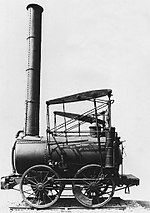Round Oak rail accident
1858 disasters in the United Kingdom1858 in England19th century in WorcestershireAugust 1858 eventsEngvarB from August 2014 ... and 5 more
Rail transport in DudleyRailway accidents and incidents in the West Midlands (county)Railway accidents in 1858Runaway train disastersTrain collisions in England

The Round Oak railway accident happened on 23 August 1858 between Brettell Lane and Round Oak railway stations, on the Oxford, Worcester and Wolverhampton Railway. The breakage of a defective coupling caused seventeen coaches and one brake van, containing about 450 passengers, of an excursion train to run backwards down the steep gradient between the stations, colliding with a following second portion of the excursion. 14 passengers were killed and 50 injured in the disaster. In the words of the Board of Trade accident inspector, Captain H. W. Tyler, it was at the time "decidedly the worst railway accident that has ever occurred in this country".
Excerpt from the Wikipedia article Round Oak rail accident (License: CC BY-SA 3.0, Authors, Images).Round Oak rail accident
William Street,
Geographical coordinates (GPS) Address Nearby Places Show on map
Geographical coordinates (GPS)
| Latitude | Longitude |
|---|---|
| N 52.483 ° | E -2.1276 ° |
Address
William Street Church
William Street
DY5 3XH , Brockmoor
England, United Kingdom
Open on Google Maps








